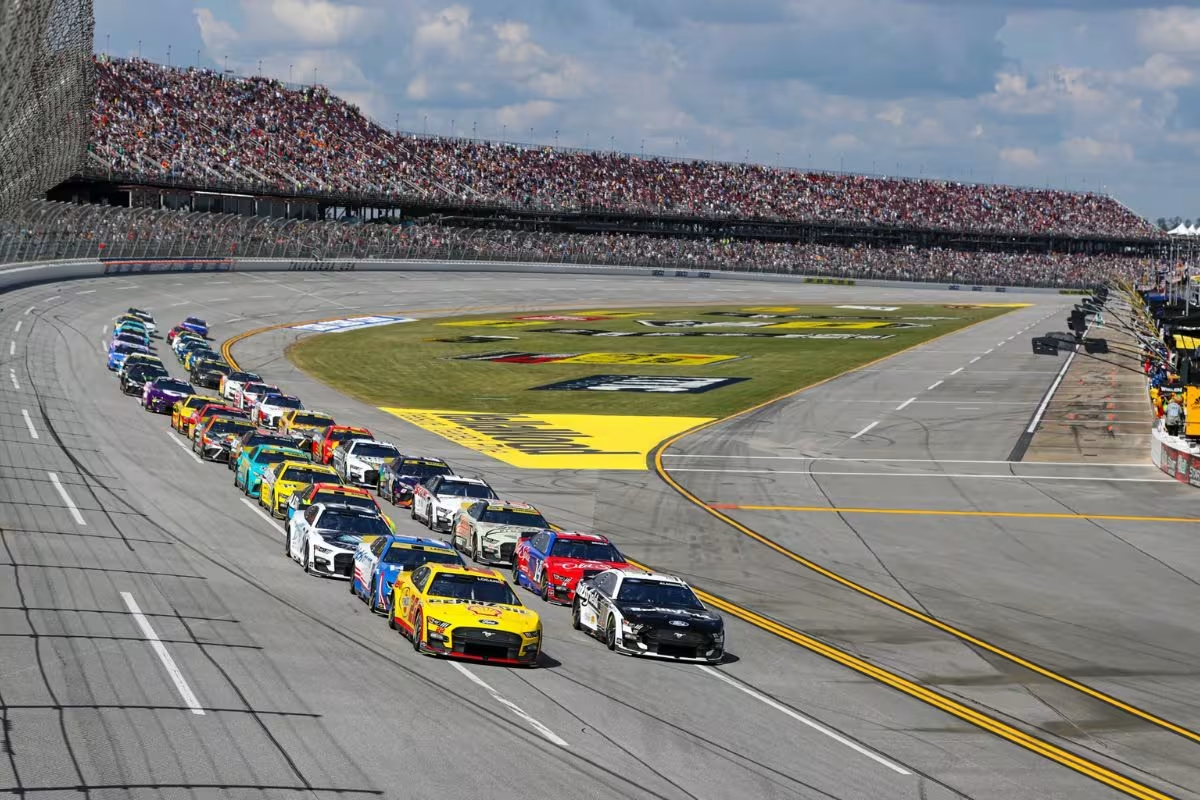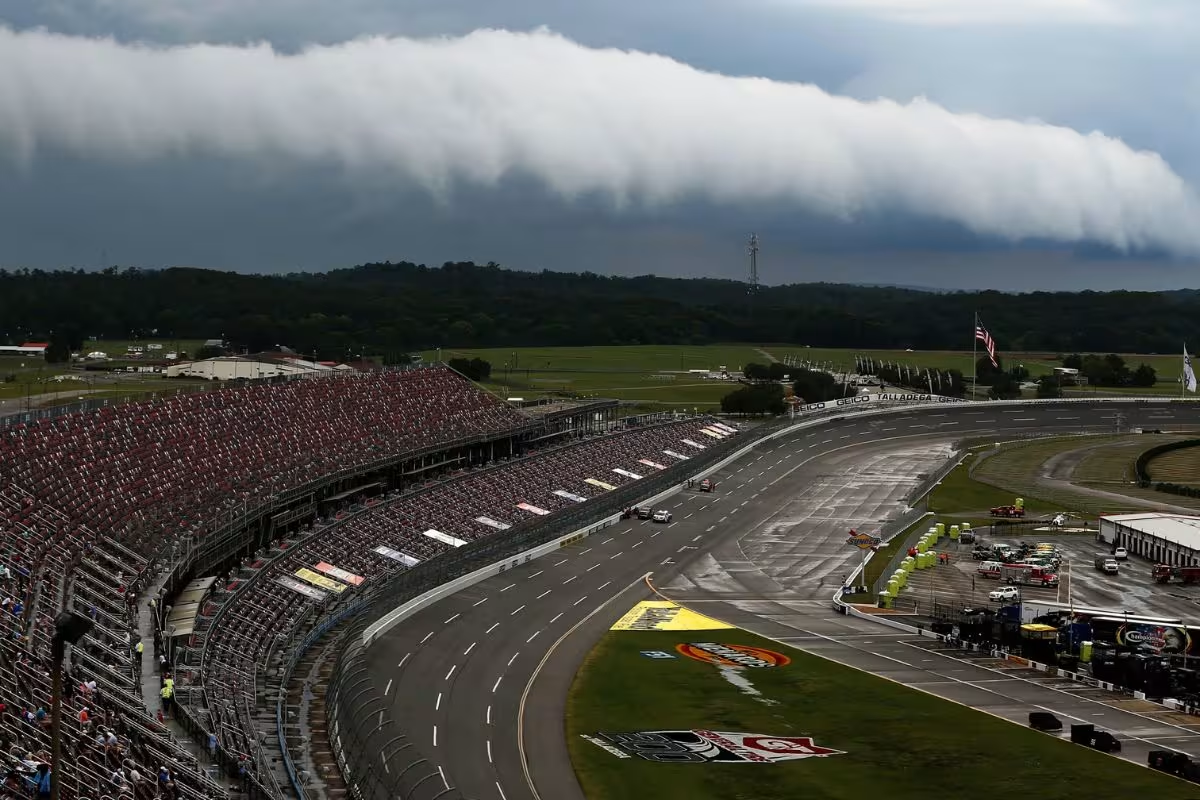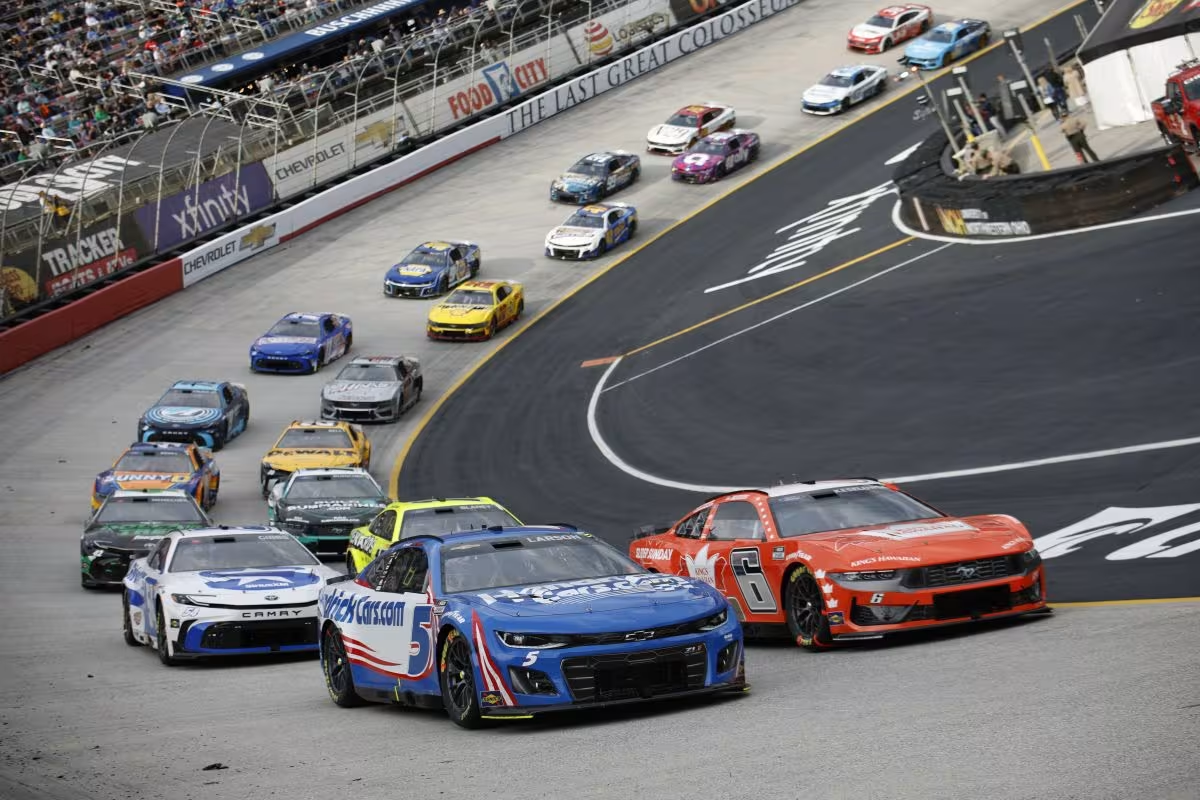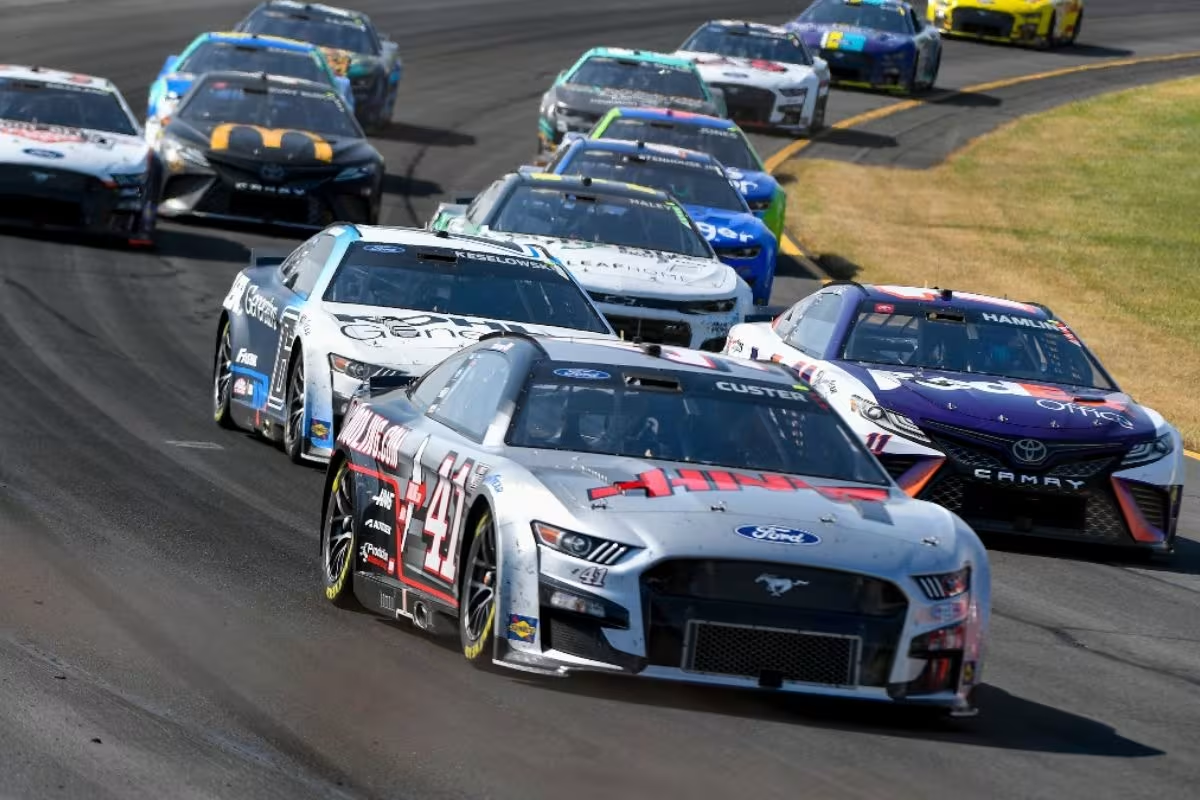NASCAR’s Money-Saving Tactics: As NASCAR implements cost-cutting measures, such as greatly shortening practice sessions, the implications for drivers heading to the notoriously perilous Talladega Superspeedway, a NASCAR racetrack, warrant critical examination. With practice now limited to under 30 minutes, teams face heightened challenges in acclimating to the track’s unique dynamics, raising concerns about both driver safety and the general fairness of competition. Importantly, these changes may disproportionately favor more affluent teams equipped with advanced simulation technology, further complicating the landscape.
Key Highlights
- Reduced practice sessions limit drivers’ adaptability to Talladega’s unique track conditions, increasing the likelihood of errors and crashes.
- Cost-saving measures may compromise safety, heightening risks during high-speed racing at Talladega, known for catastrophic multi-car accidents.
- New components, like the air deflector, lack empirical testing, causing anxiety among crew chiefs about vehicle performance under race conditions.
- Wealthier teams leverage advanced simulations, widening competitive gaps and making it harder for less affluent teams to compete effectively at Talladega.
- The unpredictability of outcomes may increase due to insufficient practice, potentially leading to disastrous results during the critical playoff race.
Talladega Superspeedway’s Nickname and Context
Why is the Talladega Superspeedway often referred to as “The Big One”? This nickname encapsulates the 2.66-mile tri-oval‘s notorious reputation for multi-car accidents, which often occur at high speeds. The design of the track, combined with the average racing speeds of approximately 180 mph for Next-Gen cars, creates a perilous environment where a single miscalculation can lead to catastrophic collisions involving numerous drivers.
The term “The Big One” is emblematic of not just the frequency of these incidents, but their scale and the dramatic impact they have on race outcomes.
As NASCAR approaches the following Round of 12 race at Talladega, the stakes escalate considerably. Playoff drivers are particularly vulnerable, as the pressure to secure an automatic berth into the next round intensifies.
The limited 20-minute practice session raises concerns regarding drivers’ preparedness, especially in a setting where split-second decisions can dictate a race’s course. The high-speed nature of the competition at Talladega demands not only skill but also a profound understanding of the dynamics of drafting and positioning.
In this context, the nickname “The Big One” serves as a cautionary reminder of the inherent risks associated with racing at Talladega. It emphasizes the necessity for drivers to balance aggression with strategy, maneuvering both the track’s challenges and the unpredictable nature of their competitors, all while considering the broader implications of the playoffs.
Changes to Practice Sessions in NASCAR
The evolution of practice sessions in NASCAR reflects a notable shift in the sport’s operational strategy, particularly in response to economic pressures and logistical challenges. The decision to reduce practice time emerged during the COVID-19 pandemic, as NASCAR sought to cut costs and streamline operations. This change has led to a considerable reduction in practice hours, diminishing from over 12 hours in the early 1980s to less than half an hour today, often preceding a qualifying session.
This drastic alteration in practice sessions has sparked mixed reactions within the motorsports community. Observers note several key factors contributing to this trend:
- Cost Reduction: Less practice time directly correlates to decreased operational expenses for teams.
- Efficient Car Inspection: Streamlined practices facilitate quicker car inspections, enhancing overall event efficiency.
- Pandemic Response: The need for reduced interactions and condensed schedules during the pandemic expedited this change.
- Impact on Driver Preparation: Limited practice may hinder drivers’ ability to adapt to track conditions effectively.
While the intent behind these changes may have been to safeguard the sport’s financial health, the long-term consequences are still under examination.
The diminishing practice sessions raise critical questions about drivers’ readiness, the quality of racing, and the general spectator experience. As NASCAR navigates these uncharted waters, the balance between cost-saving measures and the sport’s competitive integrity remains an ongoing challenge.
Impact of Changes on Teams and Drivers
As NASCAR implements changes aimed at cost-saving, the implications for teams and drivers are profound and multifaceted. By limiting modifications to the cars, NASCAR reduces the necessity for extensive mechanic involvement, thereby lowering travel and personnel costs. However, this strategy invites substantial challenges as teams must now navigate a landscape of uncertainty regarding vehicle performance and adaptability.
The introduction of the air deflector on the right side of the windshield of Next-Gen cars raises pressing concerns. With little to no prior testing of this component, crew chiefs and engineers find themselves in a precarious situation. NASCAR Insider Brett Griffin aptly noted that these individuals are likely in “full-blown panic mode,” as they lack empirical data to inform their strategies at Talladega.
“Crew chiefs and engineers, they will be in full-blown panic right mode right now. Because it’s not been tested, it’s not been run, we don’t know what it’s going to do, and guess what else we’re not doing when we get there? We’re not practicing!” – Brett Griffin
This unknown factor not only heightens anxiety among teams but also complicates the preparation process, particularly as practice sessions are curtailed.
Furthermore, the inability to practice compounds the challenges faced by drivers who rely on real-time feedback and adjustments to optimize their cars for the unique conditions of Talladega Superspeedway. The convergence of these cost-saving measures and the inherent unpredictability of the new components could set the stage for a chaotic race, potentially compromising both driver safety and competitive integrity.
Challenges with Limited Practice
Numerous challenges arise from the limited practice sessions mandated by NASCAR, particularly in the high-stakes environment of Superspeedway racing. The absence of adequate on-track time constrains teams’ ability to adapt to car modifications and track conditions, elevating the risk of miscalculations during essential playoff events.
These challenges manifest in several key areas:
- Data Dependency: Teams rely heavily on historical data, which may not accurately predict performance following changes to the Next-Gen cars.
- Costly Simulations: With limited practice time, many teams have invested in advanced simulation models, driving costs up and negating the intended savings from reduced on-track sessions.
- Unpredictable Variables: Changes to car configurations introduce new variables that teams must quickly analyze without the benefit of real-world testing.
- Competitive Disparity: Teams with greater resources can better utilize simulations, potentially widening the gap between well-funded organizations and smaller teams.
As teams head into races like Talladega, the stakes are amplified. A single misjudgment in preparation can lead to disastrous outcomes, making the need for thorough understanding and precise adjustments more vital than ever.
Opinions on Practice Sessions and Their Impact on Competition
Opinions on practice sessions within the NASCAR community are deeply divided, reflecting a broader tension between the desire for competitive equity and the need for effective preparation. Proponents argue that practice sessions allow drivers to acclimate to the track and foster fan engagement, heightening anticipation for the race. Conversely, critics contend that these sessions introduce an element of predictability that can undermine the sport’s inherent unpredictability.
The disparity in resources among teams amplifies this debate. Major organizations like Hendrick Motorsports and Joe Gibbs Racing possess advanced technology and personnel, enabling them to optimize their setups during practice. In contrast, smaller teams, such as Front Row Motorsports, often lack similar resources, which can perpetuate a competitive imbalance.
Michael McDowell’s perspective encapsulates this concern; he advocates for fewer practice sessions, asserting that they disproportionately benefit larger teams by allowing them to refine their performance further.
“I wish we didn’t have practice at all. I know there’s guys that would like to have practice and I understand why they would, but selfishly, I think any time that they give us more time to practice, the bigger teams do a better job of maximizing their car potential and setup.” – McDowell
This raises critical questions concerning the sufficiency of practice time. While adjustments may be necessary when new tracks or car regulations are introduced, the balance must be struck to avoid granting an undue advantage to the more affluent teams.
The unpredictability that characterizes NASCAR races captivates fans and enhances the sport, making it crucial to reflect on how practice sessions might influence competitive dynamics.
News in Brief: NASCAR’s Money-Saving Tactics
The reduction in practice session durations at Talladega Superspeedway raises notable concerns regarding driver safety and competitive fairness. With limited preparation time, teams face challenges in adapting to the intricacies of high-speed racing, potentially exacerbating the risks associated with multi-car incidents. Wealthier teams benefit from advanced simulation technologies, further widening the performance gap. Ultimately, these money-saving tactics may not only compromise the integrity of the competition but also endanger the well-being of all participants on the track.
ALSO READ: NASCAR Race Today Highlights: Recap of Hollywood Casino 400




